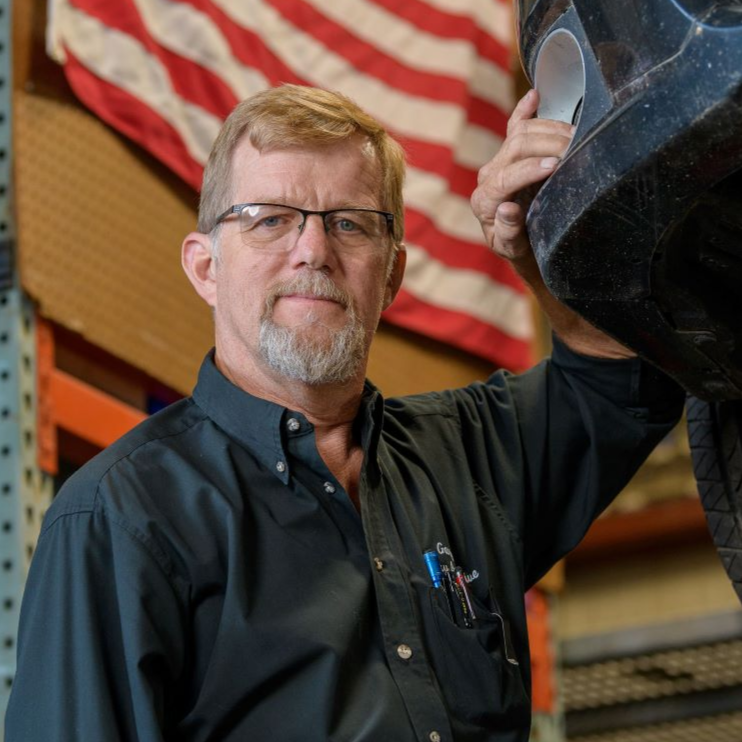You can tell by the noise level coming from a vehicle's exhaust system if the engine is running without a muffler. The muffler is specially designed so that the sound waves produced by the engine will partially cancel themselves out as those waves travel through the muffler.
Where does the Sound originate?
Simply stated, the sound is a pressure wave formed from pulses of alternating high and low air pressure. When an exhaust valve in an engine opens and a burst of high-pressure gas suddenly enters the exhaust system, it creates pulses of air pressure. The molecules in this gas collide with the lower-pressure molecules in the pipe, causing them to stack up on each other. They, in turn, stack up on the molecules a little further down the pipe, leaving an area of low pressure behind. This is how a sound wave moves through the pipe much faster than the actual gases do.
How does the Muffler cancel out sound?
If you were to look inside a muffler, you will see a simple set of tubes with holes in them. These tubes and chambers are actuall¬y as finely tuned as a musical instrument and are designed to create reflected waves so that they interfere with each other, thereby canceling each other out. The exhaust gases and the sound waves enter through the center tube. They bounce off the back wall of the muffler and are reflected through a hole into the main body of the muffler. They pass through a set of holes into another chamber, where they turn and go out the last pipe and leave the muffler.
Typically, the body of the muffler is constructed in three layers: Two thin layers of metal with a thicker, slightly insulated layer between them. This allows the body of the muffler to absorb some of the pressure pulses. Also, the inlet and outlet pipes going into the main chamber are perforated with holes. This allows thousands of tiny pressure pulses to bounce around in the main chamber, canceling each other out to some extent in addition to being absorbed by the muffler's housing.
Got questions about your vehicle's exhaust system? Contact our ASE Certified Technicians at Gary's Quality Automotive by calling (308) 381-2295 or go online at https://www.garysautoinc.com/ for more information. Our auto shop proudly serves vehicle owners in Grand Island, NE, Wood River, NE and Doniphan, NE.
You can tell by the noise level coming from a vehicle's exhaust system if the engine is running without a muffler. The muffler is specially designed so that the sound waves produced by the engine will partially cancel themselves out as those waves travel through the muffler.
Where does the Sound originate?
Simply stated, the sound is a pressure wave formed from pulses of alternating high and low air pressure. When an exhaust valve in an engine opens and a burst of high-pressure gas suddenly enters the exhaust system, it creates pulses of air pressure. The molecules in this gas collide with the lower-pressure molecules in the pipe, causing them to stack up on each other. They, in turn, stack up on the molecules a little further down the pipe, leaving an area of low pressure behind. This is how a sound wave moves through the pipe much faster than the actual gases do.
How does the Muffler cancel out sound?
If you were to look inside a muffler, you will see a simple set of tubes with holes in them. These tubes and chambers are actuall¬y as finely tuned as a musical instrument and are designed to create reflected waves so that they interfere with each other, thereby canceling each other out. The exhaust gases and the sound waves enter through the center tube. They bounce off the back wall of the muffler and are reflected through a hole into the main body of the muffler. They pass through a set of holes into another chamber, where they turn and go out the last pipe and leave the muffler.
Typically, the body of the muffler is constructed in three layers: Two thin layers of metal with a thicker, slightly insulated layer between them. This allows the body of the muffler to absorb some of the pressure pulses. Also, the inlet and outlet pipes going into the main chamber are perforated with holes. This allows thousands of tiny pressure pulses to bounce around in the main chamber, canceling each other out to some extent in addition to being absorbed by the muffler's housing.
Got questions about your vehicle's exhaust system? Contact our ASE Certified Technicians at Gary's Quality Automotive by calling (308) 381-2295 or go online at https://www.garysautoinc.com/ for more information. Our auto shop proudly serves vehicle owners in Grand Island, NE, Wood River, NE and Doniphan, NE.


